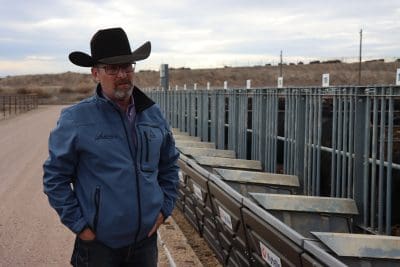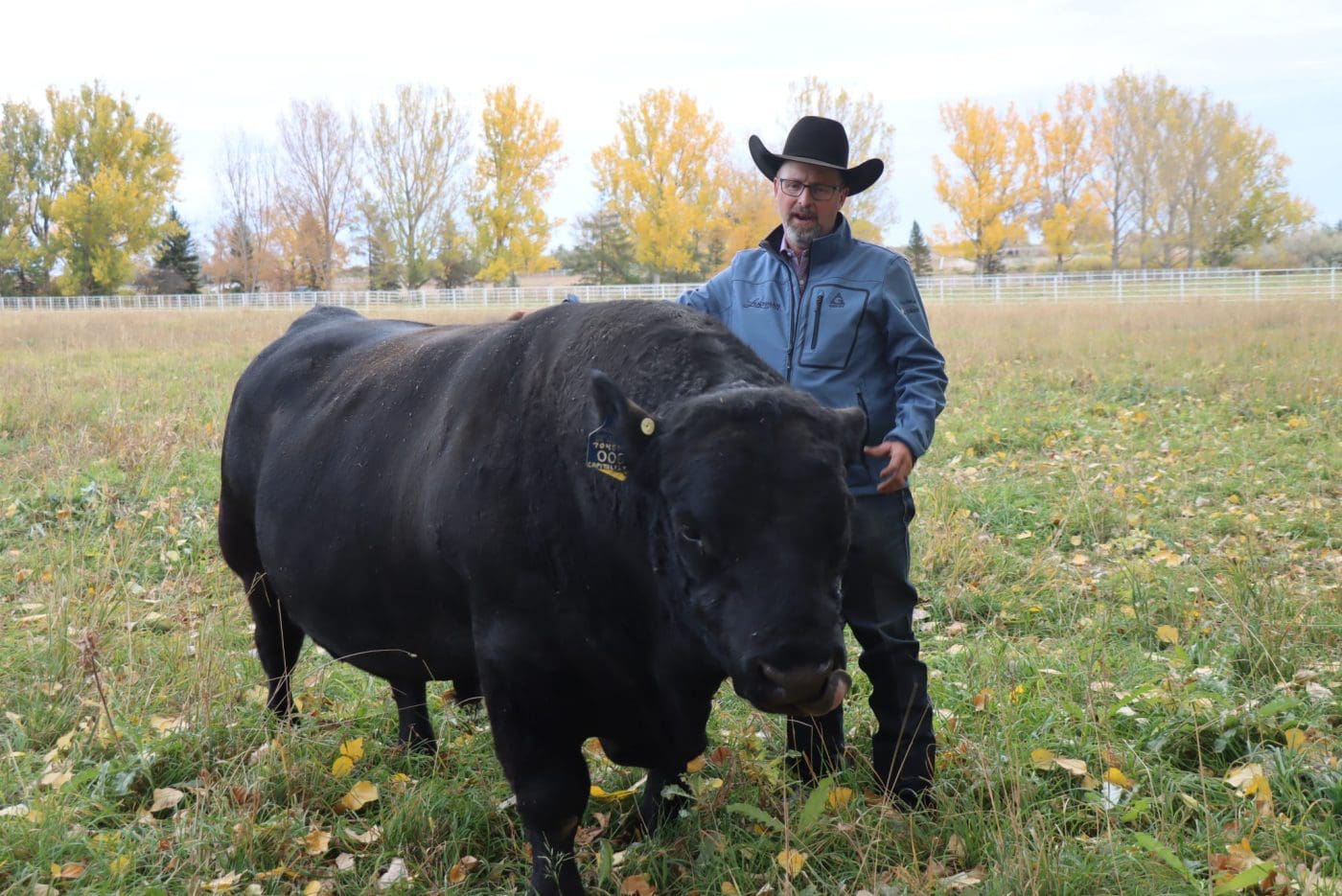
Leachman Cattle sales and marketing manager Russ Princ with one of the company’s most successful sires Capitalist, who has become somewhat of a pet.
IF YOU want to understand the true scale of the “beef-on-dairy” shift in the United States, it is worth taking a trip to Leachman Cattle in Colorado.
The Fort Collins-based company traditionally markets about 2000 bulls and 2000 cows each year, through private deals and at sales across the country. However, the physical sales are quickly being overtaken by semen straws going into artificial insemination programs in dairies.
The company was already well-known across the world for its solutions-based approach to genetics, which it has exported to New Zealand, Australia and Europe.
Working out the beef-on-dairy genetics has seen it take the next step in production, outgrowing its home in Northern Colorado with the purchase of a new farm and feedlot in Wyoming. It is also aiming to supply the majority of the genetics to another 150,000 head feedlot – which will be one of the largest in the US and will have majority beef-on-dairy cattle.
Its growth has prompted corporate investment, last year being purchased by the URUS group, which owns AgSource, Alta Genetics, GENEX, Genetics Australia, Jetstream Genetics, PEAK, SCCL, Trans Ova Genetics and VAS.
Beef Central recently visited Leachman Cattle at its headquarters in Fort Collins, Colorado, to get a tour of the operations from its head of sales and marketing Russ Princ.
Capitalist
The first part of the tour was to give an idea of the philosophies Leachman Cattle had developed breeding beef cattle over the best part of a century – the main philosophy being that producers need to be profitable.
Mr Princ took us down to meet one of the operation’s most successful sires ‘Capitalist’ – a nine-year-old, moderate framed composite bull that supplies “stabilizer” genetics. Stabilizers are a trademarked composite breed that have a focus on reproduction, reducing birth weights, feed conversion and weight gain.
As the name suggests, Capitalist has certainly earned his keep for Leachman Cattle over the years, with his genetics still featuring at the company’s bull sales.
He has also become somewhat of a farm pet and an ideal first stop for the regular tours that pass through the operation.
“We normally sell bulls when they are about 18 months old. Capitalist is about nine years old now and he is allowed to stay here for as long as he wants,” Mr Princ says as Capitalist comes running over for a play and a scratch.
“You see how quiet he is, we don’t put up with attitudes here, there are too many good cattle in this world to be putting up with animals that have attitudes. A lot of the ranchers we work with are getting older and we don’t want anyone to get hurt.”
Reducing frame while increasing yield
While Capitalist had seemingly booked his place in the Leachman longyard, the next stop was to visit some of the bulls that were set to depart the property at the company’s on farm bull sale the following week.
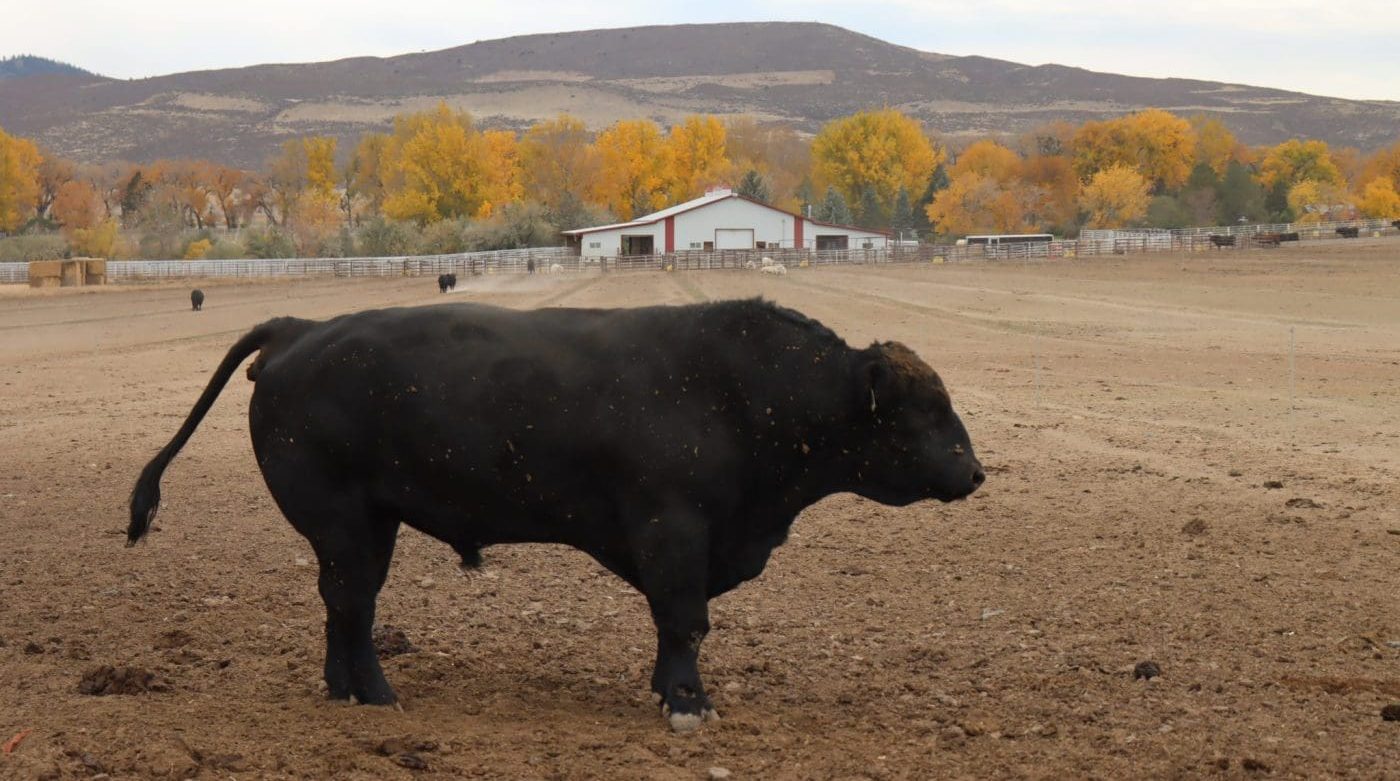
Bulls preparing for sale at the Leachman Cattle headquarters in Fort Collins Colorado
Further down the road more bulls were being custom fed, ready for a series of five sales across the last two months of the year.
A lot of the stock are bred through cooperator arrangements with other studs across the Northern half of the United States – many of them tailored towards raising cattle in cold/high-altitude climates.
Mr Princ said optimising frame size had been one of the big challenges the operation was trying to solve.
“Big-framed cattle don’t breed back, they are harder doing, they take a lot more groceries to get them fat and to keep fat,” he said.
“When their cows come back bred every year, that is when producers make money.”
Mr Princ said the focus on moderate-framed cattle had a corresponding focus on increasing yield.
“For the packing plants, it takes the same amount of effort to cut a 1300lb (600kg) carcase as it does to cut a 1500lb (700kg), but they can’t get too big-a-frame because they can’t fit on the tracks,” he said.
“If we can make a moderate-framed animal, that does well in the climate, that does not have so much bone and waste then everyone wins.”
Semen straws tailored to dairies
The large-scale adoption of sexed semen for replacement heifers in the US dairy industry opened an opportunity to use beef genetics in the remaining dairy cows. All cows in dairies need to have a calf every year to keep lactating, even if they are not breeding replacements.
With years of experience breeding for beef, Leachman Cattle set about tailoring its genetics to cross with dairy cattle.
Conception was the main issue in the beef-on-dairy industry, with large-scale artificial insemination programs going through the cows once a day.
“When that breeder comes through, it doesn’t matter whether the cow was in heat two hours ago or 24 hours ago, she is getting inseminated now,” Mr Princ said.
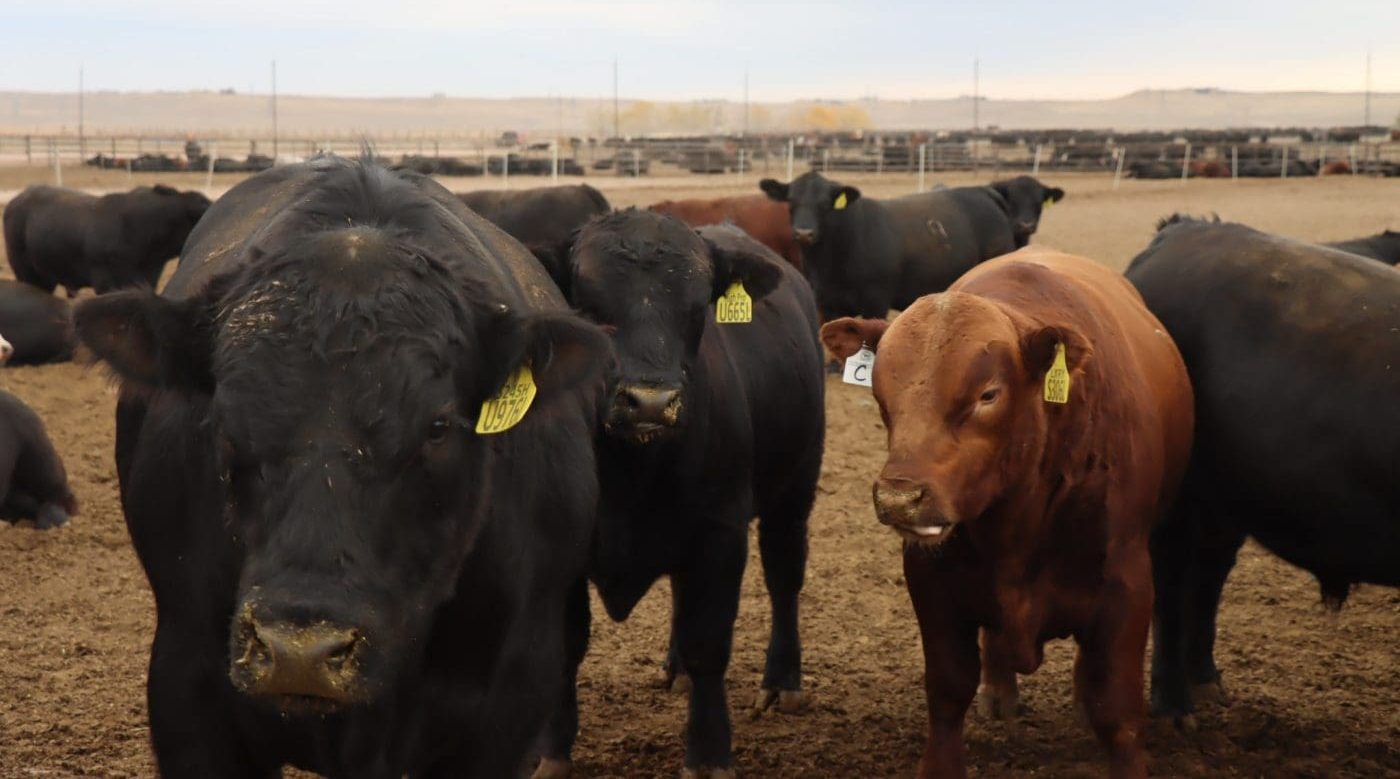
Bulls being prepared for a sale at a feedlot near Leachman Cattle, to be sold across five sales in the last two months of the year.
Working with another stud closer to Denver, Leachman Cattle came up with blended semen straws which host three different samples from three different bulls.
“They are similar genetics, but I try to take an older bull and two younger bulls and mix their semen together to boost fertility,” Mr Princ said.
“The theory is that these bulls are going to have mature sperm cells at different rates – so it doesn’t matter when the cow ovulates there are going to be some mature sperm cells.”
Asked whether he thought there was potential for sexed semen to make beef-on-dairy steer calves, Mr Princ said he had concerns about the conception rates – with current sexed semen programs still having issues. He said at this point the lower conception rates would not outweigh the premiums for steers.
Big data wins
Mr Princ said capturing data was key to competing in the beef-on-dairy industry.
“We are getting big time data now and we are 2pc above the second-best conception rates and 8pc above the rest of the industry – with that data, these semen straws are helping us survive in beef-on-dairy,” Mr Princ said
“At some point, we will go back and find out which bull from the blend is conceiving the most cows. But the main thing we need today is calves on the ground.
“As in industry, big data is going to win.”
With data already being captured on both the beef cattle and the beef-on-dairy cattle, Leachman has been measuring its emissions through a greenfeed monitoring system. (Read about them here)
It has also been overlaying that data through a Growsafe feed bunk, which scans ear tags of cattle eating at the individual bunks and correlates this with consumption and weight gain to measure feed efficiency.
Beef-on-dairy cattle have already been credited for reducing the dairy sector’s emissions footprint, as those calves that were largely unproductive are now more productive. Mr Princ said adding some traits from the beef cattle could reduce the emissions intensity even more.
“We can identify which cows are emitting the most methane and when we are asked which cows emit less, we can tell you,” he said.
“The ones that emit the least are the ones eat less and gain more.”
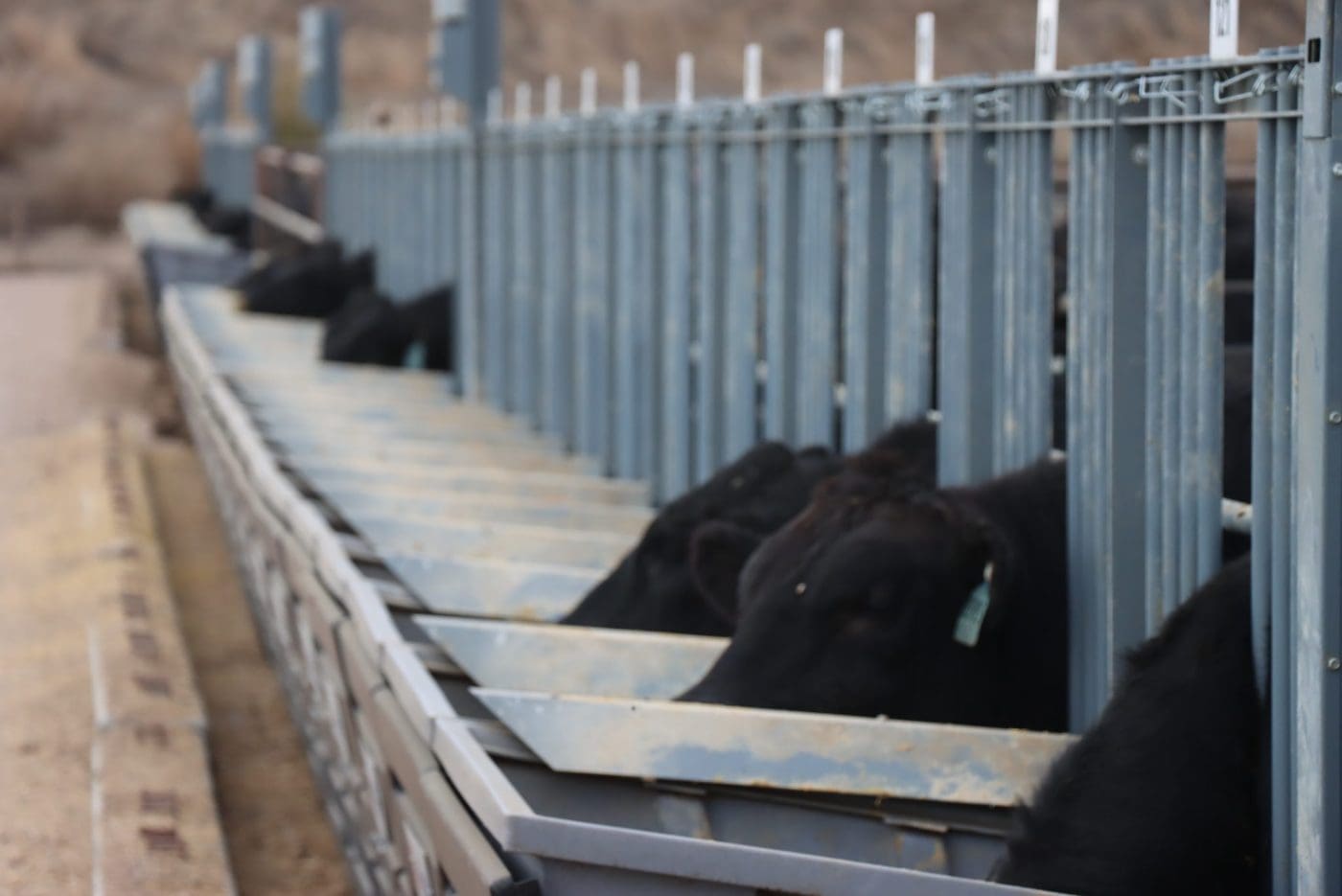
Beef-on-dairy cattle growing using the Growsafe bunks, which measure their feed intake and correlate it with weight gain, to measure feed efficiency.
The Beef-on-dairy supply chain
When the beef-on-dairy calves are born in the dairy, they are taken at one-day-old to a calf depot, before being transported to another specialist facility which will rear them on milk.
“They transport very well from that first day of birth until one-week-old, better than they do when they are three-or-four weeks old,” Mr Princ said.
The calves are then transported to a feedlot where they are grown out. One of the main ways to tell the beef-on-dairy calves apart from the others in the feedlot is by how curious they are, having experienced human contact for their entire lives.
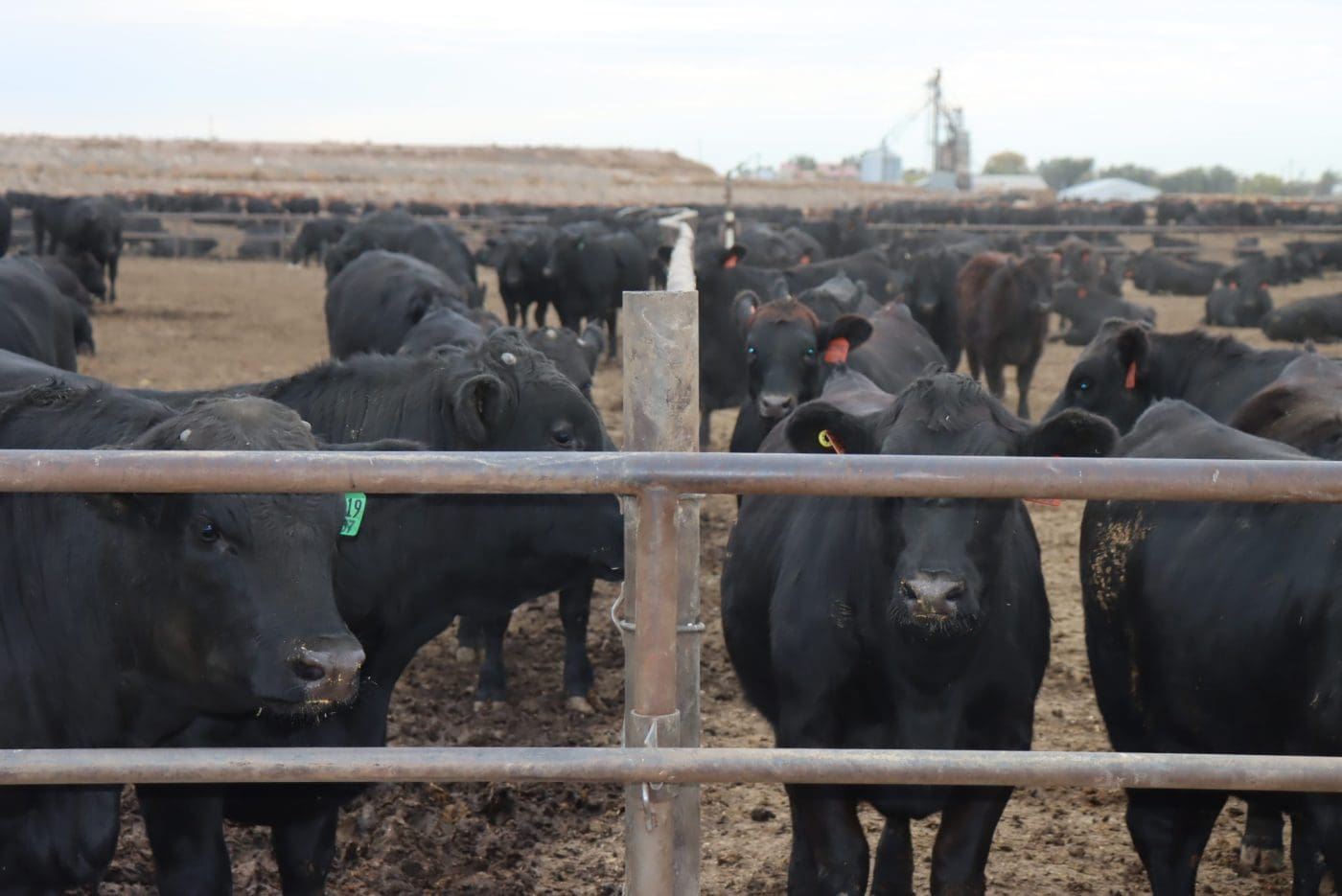
Beef-on-dairy cattle in the feedlot in Colorado. The curiosity of the beef-on-dairy cattle is noticeable with all of them being in contact with humans every day from when they are born.
Mr Princ said the beef-on-dairy calves were well suited to feedlot operations.
“With doing a beef-on-dairy program, you can keep that feedlot full every day. The thing that costs you the most money in a feedlot is empty pens,” he said.
“Traditionally, you have your spring calves and your fall calves and you have a little period there where you don’t have many cattle – but with the beef-on-dairy, you can have a truck load every day if you want.
“We get so much data from dairies, we get pregcheck records, we get semen records and we know how many calves should be born and the feedlots can schedule it in.”
Value-adding existing beef
Mr Princ said the beef-on-dairy shift in the US was not about displacing traditional beef, but rather about adding value to existing beef.
“These cattle were already in the food system, we are not making more beef, we are not replacing the beef-on-beef calf – we are just making the beef that we had better for the consumer,” he said.
“Where we are going to challenge the traditional beef industry is by making better and more efficient prime animals.”
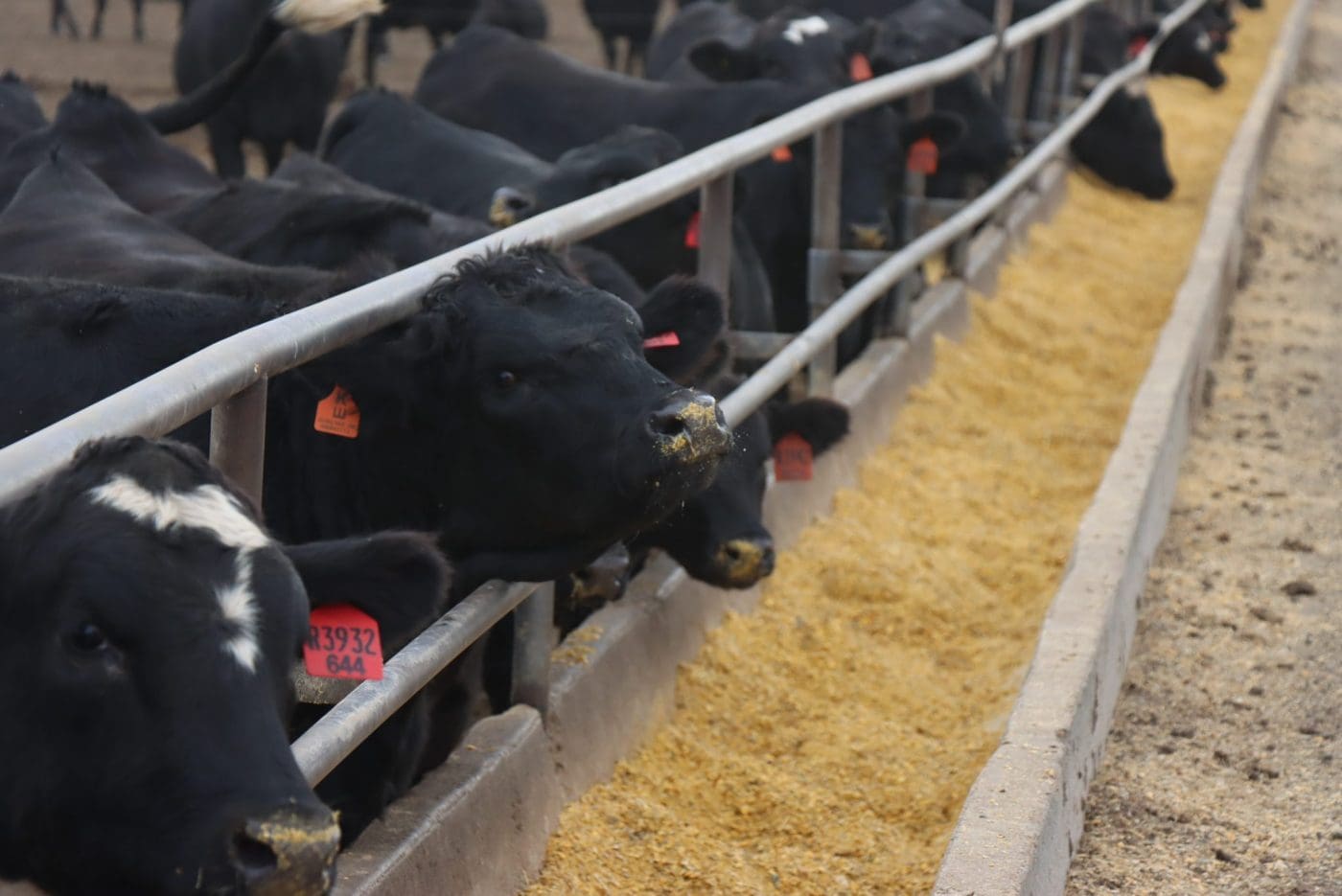
Beef-on-dairy cattle growing out on a high percentage corn finisher ration in a feedlot in Northern Colorado. The uniformity of the cattle means there has been limited ration changes.
Mr Princ said more than 25pc of the calves coming out of the beef-on-dairy program are grading as Prime on the United States Department of Agriculture beef grading system. Prime is the highest quality in front of Choice, then Select at the bottom.
“It is very hard to get those results out of beef-on-beef calves, it is very hard to get that much Prime. We can get that consistency because we know how to feed them and we know the genetics that will get those Primes,” he said.
Potential for branded beef
Most of the beef-on-dairy cattle in the US are going into Angus programs, with companies like McDonald’s and other branded programs being big supporters of its development. Beef-on-dairy was the main reason for a push earlier this year to change the Australian breed descriptor of Angus from 75pc Angus to 50pc Angus – with a beef exporter hoping to get beef-on-dairy cattle into its Angus program.
Leachman Cattle is hoping that its beef-on-dairy cattle into its own branded beef, which Mr Princ said would eliminate some of the issues created by putting them into Angus programs.
“The Angus breed in the US says they have to be black. We are trying to make them all black at the moment, but we could have red ones in the future when the hide doesn’t matter,” he said.
“The uniformity of what these cattle do is just mind blowing to me. Yeah you have some odd balls in here, but they all feed the same, look the same and act the same.”
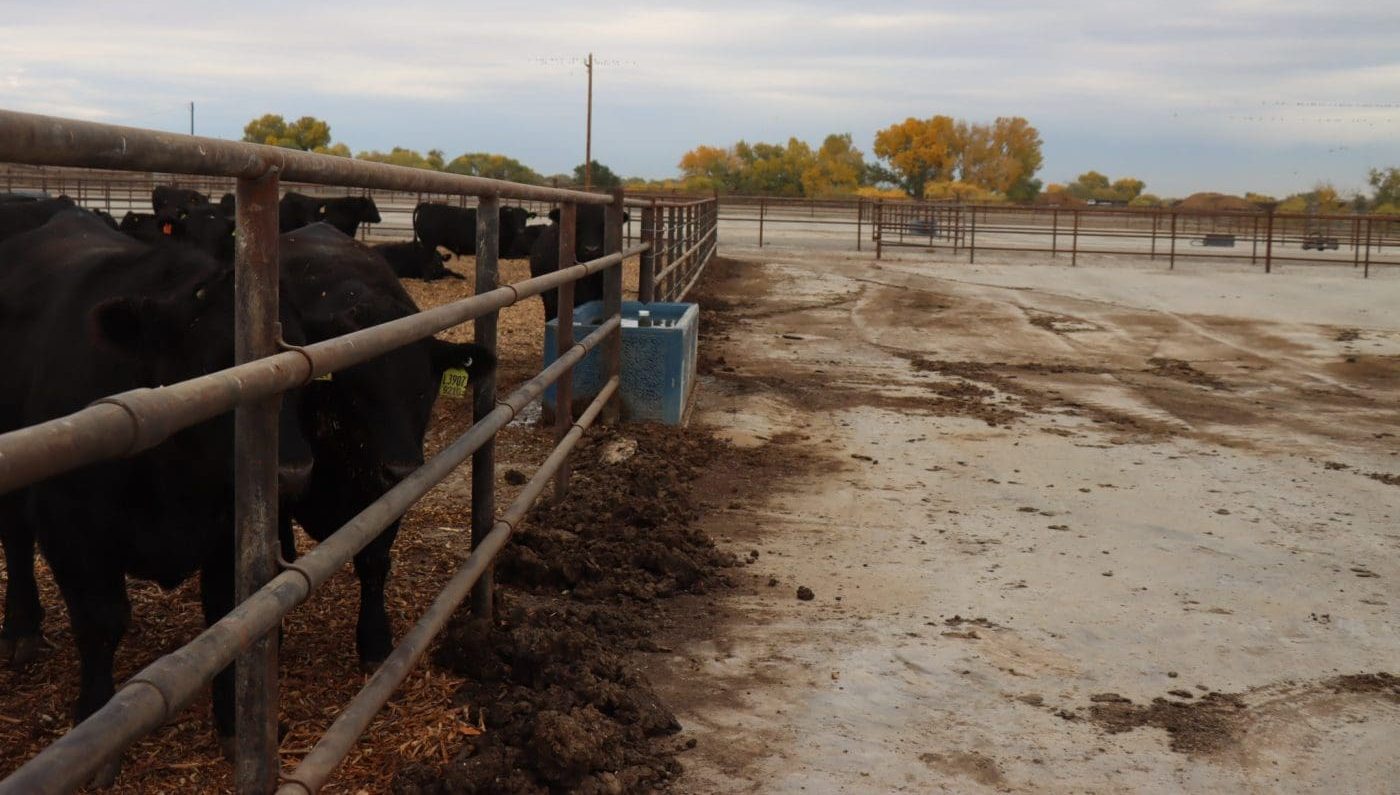
Leachman Cattle is trialling rolled concrete on its pen floors in partnership with another lotfeeder, to optimise pen management and reduce soil loss.
Outgrowing head office
A combination of the growth in beef-on-dairy cattle and the corporate investment from the URUS group has pushed Leachman Cattle further north into Wyoming to look for more scale.
Land prices in the rapidly populated area of Northern Colorado and a desire to have more control over the operation prompted a property purchase a 5000 head commercial feedlot and an associated 34,000ac (13,000ha) property.
“When we move up to Wyoming, we will be able to have more control over what we do and everyone working for us will have skin in the game – we can make sure the feed truck driver knows his job is as important as anyone else’s,” he said.
“You not under the thumb of other operations.”
Another operation expanding in North American is Canadian cattle feeder Kee Jim, D.V.M. who purchases the beef-on-dairy calves from dairies using Leachman’s genetics.
Kee Jim is one of the main investors in the Blackshirt Feedyard in Nebraska, which is expected to be one of the largest feedlots in the US with a capacity of 150,000 head.
Mr Princ said the goal is to fill the majority of the feedlot with beef-on-dairy cattle using the Leachman genetics.
“That is the whole big picture plan, right now we don’t have enough of the beef-on-dairy calves and they have some conventional calves,” he said.
“But the hope is that they will be primarily Leachman-sire calves. That won’t necessarily need an expansion, but it will mean more bulls in the stud making semen.”
- This is the last of Eric Barker’s series of stories from a recent trip to the Societal Role of Meat conference in Denver, Colorado.
More stories from the US
- Buc-ee’s: America’s highway haven for beef and the world’s biggest convenience store + PHOTOS
- How this US ranch is surviving Yellowstone-like urban encroachment + PHOTOS
- Can Australian beef gain a bigger foothold in the US? + PHOTOS
- What millions of years of herbivores can tell us about reducing emissions and regenerating forests
- “Nourishment table” a new approach to dietary guidelines that prioritises protein
- More studies reinforce importance of red meat in mitigating disease
- Scientists call for end to widespread discreditation of meat

